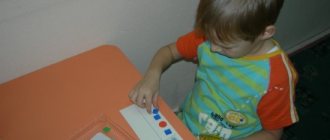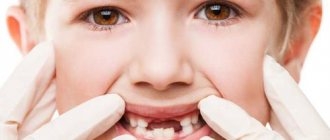For speech impairments associated with auditory-verbal memory disorders, doctors make a diagnosis of “Acoustic-mnestic aphasia.” The pathology is characterized by difficulty repeating combinations of words, as well as difficulties in selecting specific words. To make a diagnosis, speech therapy examination, magnetic resonance imaging and other methods of laboratory and instrumental diagnostics are used. Correction of acoustic-mnestic aphasia requires an integrated approach - eliminating the immediate cause, classes with a speech therapist and the use of medications.
general information
Aphasia is the most common complication of strokes and other brain lesions. According to statistics from the World Health Organization, 30% of people with speech disorders are of working age. Moreover, 80% of them are disabled due to speech impairments.
The acoustic-mnestic type of pathology was identified by A. Luria. He noted that patients retain the ability to repeat individual words and understand them, however, when writing from dictation or when communicating with long sentences, patients begin to make mistakes.
The disease is accompanied by impaired auditory-verbal memory and a decrease in the volume of acoustic perception. Patients with such disorders remain critical of their condition and complain that during a conversation they do not understand well what they hear, and they themselves have difficulty finding words.
Optical-mnestic aphasia
Optical-mnestic aphasia, in contrast to the previously described type, is associated with a violation of visual perception. A person suffering from this disorder has difficulty building a connection between the image and the name of an object or phenomenon.
If you show him a picture of a certain object, he will not be able to give it a specific name. Moreover, if you say the name of an object out loud, he will not be able to draw it from memory, but he will be able to copy it.
Despite such peculiarities of perception, patients are well oriented in space. When naming an object, a person will not be able to pronounce the specific word that is required, but will be able to describe its purpose or the actions for which it is intended.
For example, if you show a patient a mug, he will say “this is what they drink from.”
Reasons for development
Neurologists know well what underlies acoustic-mnestic aphasia. The pathology is characterized by the appearance of a lesion in the region of the mid-posterior sections of the anterior temporal gyrus in the cerebral cortex. The damage is localized in the dominant hemisphere - in the left in right-handers, and in the right in left-handers. The defeat is organic in nature:
- With the growth of intracerebral benign and malignant tumors, as well as metastatic foci, the nervous tissue is compressed or directly destroyed by the tumor.
- An ischemic stroke leads to the death of an area of the cerebral cortex as a result of a sharp decrease in blood flow. Hemorrhagic stroke is accompanied by the development of hemorrhage, which leads to compression of the nervous tissue.
- The occurrence of traumatic brain injuries is accompanied by bruising or crushing of brain tissue, as well as the formation of hematomas. This can cause damage or death to nerve cells located in the anterior temporal gyrus.
- Degenerative diseases that tend to constantly progress (Pick's disease, Alzheimer's disease, etc.) lead to local death of neurons, leading to impairment of many cognitive functions, including speech.
- Neuroinfections, primarily encephalitis, lead to the formation of an inflammatory focus in the cerebral cortex. Neurons in the area of inflammation are damaged and die.
The main mechanism of acoustic-mnestic aphasia is damage to the specified area of the temporal gyrus. This nerve center is responsible for choosing words during a conversation. Clinically, this leads to impairment of auditory-verbal memory - its volume decreases and the person begins to forget words. In addition to speech, counting, reading and writing suffer. If the damage is extensive, the posterior parts of the temporal gyri may suffer. As a result, the functioning of optical-gnostic structures is disrupted. Patients cannot compare the visual image of an object and its verbal designation. In this case, speech loses its meaning.
AFFERENT MOTOR APHASIA
Afferent motor aphasia occurs with damage to the secondary zones of the postcentral and inferior parietal parts of the cerebral cortex, located posterior to the central or Rolandic sulcus.
There are two types of this aphasia. The first type of aphasia is observed with damage to the postcentral parts of the left hemisphere in both right-handers and left-handers, and is characterized by a complete loss of expressive speech. The second type of aphasia is observed in persons who were retrained in preschool and primary school age from the left hand to the right.
In the first variant of afferent kinesthetic motor aphasia, severe apraxia of the articulatory apparatus can lead to a complete absence of spontaneous speech. Attempts to arbitrarily repeat sounds lead to chaotic movements of the lips and tongue and literary substitutions. Patients split a closed syllable into two open ones, split up consonant clusters in a syllable, and omit consonant sounds. And at the same time the words here, there, here, etc. sound like tu-t, ta-t, vo-t, etc.
In the process of complex treatment of patients after a stroke at the Vremena Goda clinic, there is a rapid restoration of understanding of situational conversational speech, understanding of the meanings of individual words, and the ability to follow simple instructions. Patients have been experiencing specific features of impaired understanding for a long time. This is due to secondary phonemic hearing impairment. With this form of aphasia, difficulties arise in recognizing by ear words with sounds that have common features in the place of words with sounds that have common features in the place and method of articulation (rough - front-lingual, sonorant - vowels, etc. There are difficulties in understanding lexical means languages that convey various complex spatial relationships.
Difficulties in understanding are caused by verbs with prefixes (wrap, return, etc.), in understanding the meanings of personal pronouns used in indirect cases, which is explained by the lack of subject orientation in them, the abundance of phonemic changes (for example, me-me-me).
Reading and writing disorders depend on the severity of apraxia of the articulatory apparatus. In the process of neurorehabilitation in our clinic, the restoration of internal reading often precedes the restoration of written speech. When writing words under dictation, when naming objects in writing, when trying to communicate in writing with others, all articulatory difficulties affect themselves, i.e. There are numerous literary paragraphs reflecting a mixture of vowel and consonant phonemes that are close in place and method of articulation; consonants (sonorant) are omitted.
In the second variant of afferent motor aphasia, patients have difficulty maintaining the order of letters in a word, imagining their mirroring, skipping vowels, or writing all the consonants first, and then the vowels, and they retain the idea of the presence of a sound in a word, for example, skipping the letter “е” ", in the word "leads", the patient puts two dots over the "d".
Clinical manifestations
A distinctive feature of acoustic-mnestic aphasia is the inability of a person to repeat a series of words heard, while maintaining the ability to pronounce them separately. Limitation in auditory-verbal memory leads to the fact that, having heard a chain of words, the patient is able to pronounce only individual words, most often the last ones. Repeated listening to a verbal chain does not lead to improved memorization. This makes it impossible to communicate with several people at the same time, and also impairs the perception of complex sentences consisting of a large number of words. If an instruction is read to a patient with aphasia, he will be able to follow the sequence, but will not be able to repeat what he heard.
During his own speech, the patient cannot quickly select words. Paraphasia occurs - the use of verbal substitutions that are not equivalent in meaning. During a speech therapy examination, agrammatisms associated with the inconsistency of individual words with each other are determined. If you ask the patient to describe thoughts or images, the story will be abrupt and difficult for him.
Dysgraphia has a number of features and manifests itself when writing from dictation. The number of agrammatisms is increasing. While writing, the patient constantly tries to repeat heard fragments in order to facilitate their writing. However, memory is limited to 2-3 words. Dyslexia is less common. It can only be identified when reading long sentences with a complex syntactic structure. Impaired fixation of read information causes a lack of understanding of its meaning and the inability to retell the text. Counting violations are detected in a small percentage of cases.
Emotional and volitional disorders also occur: mood lability, constant anxiety and “fussiness” are noted. With an extensive lesion, clinical manifestations may affect other areas of the patient’s personality.
What is acoustic-mnestic aphasia
Acoustic-mnestic aphasia is one of the forms of speech disorders, which is the subject of study in neuropsychology.
A feature of this type of disorder is the inability to remember a large amount of information by ear due to organic lesions in the middle parts of the temporal region, located outside the nuclear zone of the auditory analyzer.
This form of aphasia was first described by A. Luria in 1947. He pointed out that when memory function is impaired, hearing is preserved, but it is difficult for a person to reproduce a certain sequence of words or even syllables, depending on the extent of the damage.
For example, some people can name only 1, 2, or only the first and last out of a series of 3 unrelated words. Others do not perceive connected sentences aurally and can only pronounce the first and last word within 1-2 minutes after hearing them.
It has now been established that aphasia in its independent form is rare. It usually appears together with other signs of damage to the nervous tissue.
Since visually the inability to repeat even a short phrase just spoken resembles an inhibited reaction, this form of aphasia is often mistaken for a neurodynamic disorder or a decrease in intellectual characteristics.
Check out the following articles:
Causes and classification of alalia
Reading dysfunction - causes of alexia
Diagnostic measures
Diagnosis of acoustic-mnestic aphasia requires a comprehensive examination with consultations of a neurologist, psychiatrist, speech therapist and other specialists. It is important to understand that these disorders are usually referred to as a “syndrome”, since its development may be based on various reasons. To identify them, the following approaches are used:
- An examination by a neurologist makes it possible to identify concomitant neurological symptoms: paresis and paralysis, sensory disturbances, etc. The cognitive sphere of a person is separately assessed - memory, ability to concentrate, etc. In case of disturbances in the mental state, a consultation with a psychiatrist is necessary.
- A speech therapy examination is carried out by a speech therapist or aphasiologist. Diagnostic signs of acoustic-mnestic aphasia are paraphasia, frequent agrammatisms, a decrease in the volume of auditory-verbal memory, and the absence of disorders of the articulatory apparatus and phonetics.
- Magnetic resonance imaging (MRI) of the brain is necessary to identify the primary cause of the pathology. MRI allows you to identify foci of tumor growth, inflammatory reaction, degenerative changes, areas with ischemia or hemorrhages.
- Lumbar puncture is performed if a neuroinfection is suspected. The resulting cerebrospinal fluid is used to identify a specific type of pathogen using PCR or ELISA diagnostics.
- Doppler ultrasound and MR angiography are used to detect cerebrovascular disorders. These methods are necessary to determine the speed of blood flow in vessels, identify blood clots, arterial stenosis and other disorders.
Differential diagnosis is carried out with other pathologies that are characterized by speech disorders. Acoustic-mnestic aphasia occurs when the temporal cortex is damaged, as a result of which the patient’s articulation and phonetics do not suffer. The characteristics of the mnestic form of pathology are associated with the absence of paraphasias and completeness of statements.
Symptoms of acoustic-mnestic aphasia
Manifestations of the disorder:
- The patient cannot understand the meaning of spoken language.
- When presented with an object, the patient cannot always name it, but names its purpose, provided that the object is known to him.
- Minor impairments in oral speech: it is common for a person to pronounce words several times and increase the pauses between them.
- The ability to read and write does not change, but it is difficult for a person to take dictation.
- Compensation of speech functions by active gestures and facial expressions.
- Increased anxiety, frequent mood swings.
- A person does not perceive all spoken speech by ear and cannot reproduce it.
- Writing skills are preserved, but the patient may use incorrect word order and syntax.
Sometimes an additional symptom is impaired mathematical ability, even when adding or subtracting simple numbers. This is due to the difficulty of remembering several numbers at the same time.
Treatment approaches
Effective therapy is based on eliminating the immediate cause of the development of speech disorder. If a tumor lesion or intracranial hematoma is detected, treatment is carried out with neurosurgery, radiation or chemotherapy. Neuroinfections are eliminated using antifungal, antibacterial or antiviral drugs. Strokes are subject to thrombolytic or hemostatic treatment.
Correction of speech disorders is based on:
- Regular speech therapy sessions
They are carried out to increase the volume of auditory-verbal memory. They must be started immediately after the onset of the disease, without delaying a visit to a speech therapist for the rehabilitation period. Initially, exercises with visual perception of an object are used, which makes them easier to remember. Next, the specialist complicates the lessons - the patient writes simple dictations by ear, learns fragments of sentences, word chains, songs and poems. To improve expressive speech, active work is being carried out to clarify the meaning of words and systematize them into separate groups.
In parallel with the treatment of the main pathology, rehabilitation measures begin with the patient. An important part of therapy is communication with medical staff, speech therapist and loved ones. As a result of constant verbal contact and speech therapy exercises, auditory-verbal memory is restored. In addition, patients are advised to exercise therapy, massage and visit a psychotherapist.
Treatment
The treatment process aimed at restoring the consequences resulting from aphasia requires a long time and enormous dedication, both from the patient and his relatives, and from medical personnel and specialists who have undergone special training. The restoration work of such a pathological condition consists of the following points:
- Pharmacological (drug) therapy. It mainly includes the use of drugs from the group of nootropics, drugs that increase the metabolism and trophic potential of the brain, vitamin therapy with neuroprotective B vitamins. Additional therapy is selected individually and prescribed in accordance with the cause of sensory aphasia. For example, in the case of a stroke, thrombolytic or hemostatic drugs are added, in the case of an infectious inflammatory lesion, antibiotics, non-steroidal anti-inflammatory drugs or antifungal agents are added.
- Session with a speech therapist. The main difficulty that arises when attempting to contact the victim is the lack of understanding of the specialist’s approach to the patient. Violation of communicative activity requires long-term correction and perseverance. There are also difficulties in interpreting what the patient says. Because his speech is uninformative. It is very difficult to identify the main idea. Consultations with a speech therapist help restore the patient’s vocabulary, correct pronunciation of sounds and meaningful speech. With the help of special exercises and equipment, you can actively interact with the patient even at home.
- Surgical interventions. In some cases, with deep or severe brain damage, the patient requires emergency surgery to eliminate the threat to life. In case of an aneurysm, clipping or sclerosis of the aneurysm can be performed using X-ray control. If aphasia is caused by tumor growth, then stereotactic surgery can be performed to destroy the tumor focus.
- Additional treatment methods can speed up the recovery processes in the victim’s nervous tissue, and also increase the effectiveness of the main therapy. In the treatment of sensory aphasia, methods such as physical therapy, massage, physiotherapeutic methods, and the use of computer programs that stimulate the speech center and improve speech abilities are used. A positive effect has also been noted in contact with animals, so the following can be used in therapy: hippotherapy, feline therapy and dolphin therapy.
At the Clinical Institute of the Brain there is a specialized rehabilitation and recovery center that deals with the correction of disorders in patients with aphasia. Together with treatment, we manage to achieve a quick, step-by-step recovery process. There is a close connection between treatment and rehabilitation, which helps to quickly adapt the patient to new living conditions, thereby significantly increasing the effectiveness of therapy and recovery.
Possible complications
Acoustic-mnestic aphasia leads to impairment of auditory-verbal memory. A speech defect is accompanied by a deterioration in a person’s socialization - he has difficulty communicating with people around him, and cannot read, write or count. This gradually reduces the level of quality of life, leading to the formation of persistent depression.
The pathology is often accompanied by a neurological deficit, which intensifies the patient’s own feelings of inferiority. Many patients are diagnosed with disability. It is important to note that acoustic-mnestic aphasia is not a cognitive disorder. Thinking and other brain functions are completely preserved. In the absence of treatment, speech dysfunction becomes persistent and difficult to correct in the future.
Prognosis and prevention
With early comprehensive correction, the likelihood of a lasting positive result is very high.
After a stroke, TBI, or encephalitis, there is a greater chance of completely restoring speech functions. The most unfavorable prognosis is for tumors, as well as for aphasia of unknown etiology.
In the absence of adequate therapy, the disorder progresses, bringing with it memory impairment and residual speech impairment.
Prevention is aimed at eliminating negative factors: eliminating oncogenic effects, being careful in everyday life to avoid injuries, and generally strengthening the immune system.
To maintain normal blood circulation in the brain, you should walk more in the fresh air, eat right, eliminate bad habits and exercise.
Acoustic-mnestic aphasia significantly reduces the patient’s quality of life and his relationships with society. It is difficult for a person to lead a normal lifestyle, build interpersonal relationships and engage in usual work activities.
The effectiveness of the correction depends on the timeliness of the measures taken: the earlier the patient and his relatives turned to specialists, the higher the chance of a successful rehabilitation result.
Related posts:
- Causes and elimination of aphasia in children and adults Aphasia in children and adults manifests itself in different ways. Methods for correcting age...
- Symptoms of semantic aphasia Signs of semantic aphasia. Features of language disorders. Prognosis for recovery. Happening…
- Forms of sensory aphasia Forms of sensory aphasia. Specific signs of sensory aphasia in children. Diagnostics…
- Causes and signs of motor aphasia...
Prevention of violations
Preventive measures are aimed at the primary prevention of diseases that can lead to speech disorders. Neurologists make a number of general recommendations:
- use protective helmets during professional activities and some sports;
- if you have diseases of the internal organs, for example, diabetes mellitus or atherosclerosis, promptly seek medical help and follow the instructions of your doctor;
- follow the principles of a healthy diet: give up fast food, fried or smoked foods, add fruits, vegetables, lean meat and other healthy foods to your diet;
- regularly engage in sports - cardio training and exercises in the gym;
- Avoid drinking alcohol and smoking.
If you experience difficulty finding words or other symptoms, you should immediately seek medical help.
Diagnostics
Diagnosis of sensory aphasia is primarily aimed at identifying the cause of the disease. The diagnostic study must be comprehensive and consist of the following stages:
- Consultation and questioning of the patient to determine the history of life and illness. Also, during the initial appointment, the doctor examines the patient and studies specific symptom complexes. The neurologist looks for concomitant diseases that manifest themselves not only by external signs, but also by conducting additional tests and studies. During the examination, a specialist neurologist determines the lesions, the nature and course of the pathological process, assesses the general condition of the patient, as well as the blood supply to the brain. Makes a prognosis and subsequent treatment plan in accordance with the patient’s age. Its individual characteristics and concomitant somatic diseases. As well as the level of damage to the central nervous system.
- Consultation with a speech therapist, psychologist and other specialists. They determine the severity of the speech function defect and coordinate further tactics for restoring lost functions with the attending physician.
- Conducting additional instrumental and laboratory studies to verify and clarify the clinical diagnosis. Studies such as computer and magnetic resonance imaging, electroencephalography, angiography of cerebral vessels are carried out. These studies are carried out to identify the level and area of brain damage, the presence of space-occupying formations in the nervous tissue, aneurysms and hemorrhages in the brain tissue, foci of abscess, and the consequences of a stroke.
Forecast
The outcome of the disease is determined by the timeliness of its detection, the severity of the primary brain lesion and the adequacy of the therapy. With the development of acoustic-mnestic aphasia against the background of ischemic stroke, traumatic brain injury or encephalitis and early initiation of treatment, speech function can be completely restored. With chronic brain damage against the background of transient ischemia or neurodegenerative diseases, aphasia develops slowly, often unnoticed by the person, leading to the development of a permanent defect.
The worst prognosis is for tumor damage to the structures of the central nervous system. Complex neurosurgical interventions with chemotherapy and radiation are rarely organ-preserving in nature. The speech defect in such patients persists for a long time.
I can almost catch what you're saying
In acoustic-mnestic aphasia, symptoms manifest themselves primarily in a weak, incomplete understanding of the speech of the interlocutor. It is difficult for the patient to grasp the context of the story, the general meaning of the statements addressed to him. When trying to speak independently, he encounters the following difficulties:
- The patient remembers what this or that object is needed for and what its characteristics are, but cannot pronounce its name.
- The speaker may repeat the same word repeatedly, as well as take unreasonably long breaks between words.
- The patient realizes that his oral speech is far from perfect. He tries to make up for the lack of words with intonations, gestures, and facial expressions.
Throughout the day, the child’s mood changes repeatedly. Periodically, he is overcome by anxiety, which further narrows the scope of auditory perception. The patient’s RAM is overloaded: although information enters the brain, it does not have time to process it in a timely manner.
Dynamic aphasia
Dynamic aphasia
is marked by damage to the posterior frontal parts of the dominant hemisphere, which are responsible for planning and regulating speech activity.
Consequently, difficulty arises when constructing a detailed statement, and in severe cases, its complete impossibility. At the same time, the patient correctly pronounces individual sounds, words and short sentences, since there are no articulation difficulties. But in situational speech, general aspontaneity
,
echolalia and echopraxia
, when an aphasic person repeats after a person not only words, but also lip movements. Violation of internal speech planning leads to primitiveness of syntactic structures, the presence of agrammatisms and speech patterns, and difficulties in retelling. Reading and writing functions are intact.
Aphasia correction
The correction includes two components:
- speech therapy
- medical
It is necessary to treat the disease that led to aphasia. Moreover, control should be carried out by a neurosurgeon or an experienced neurologist. Medicines are used for treatment. But sometimes the help of surgeons is also needed. Rehabilitation measures include massage, physiotherapy, mechanical therapy and physical therapy.
To restore normal speech, the patient must attend special speech therapy classes. Correction should be made regarding all components of speech:
- impressive
- expressive
- writing skills
- reading and understanding texts
Treatment for aphasia should begin immediately after injury or stroke, as determined by the attending physician. The sooner treatment is started, the greater the chances of getting rid of pathological symptoms, preventing them from becoming “chronic”. Speech therapy work aimed at restoring normal speech in a patient usually lasts two or three years.







